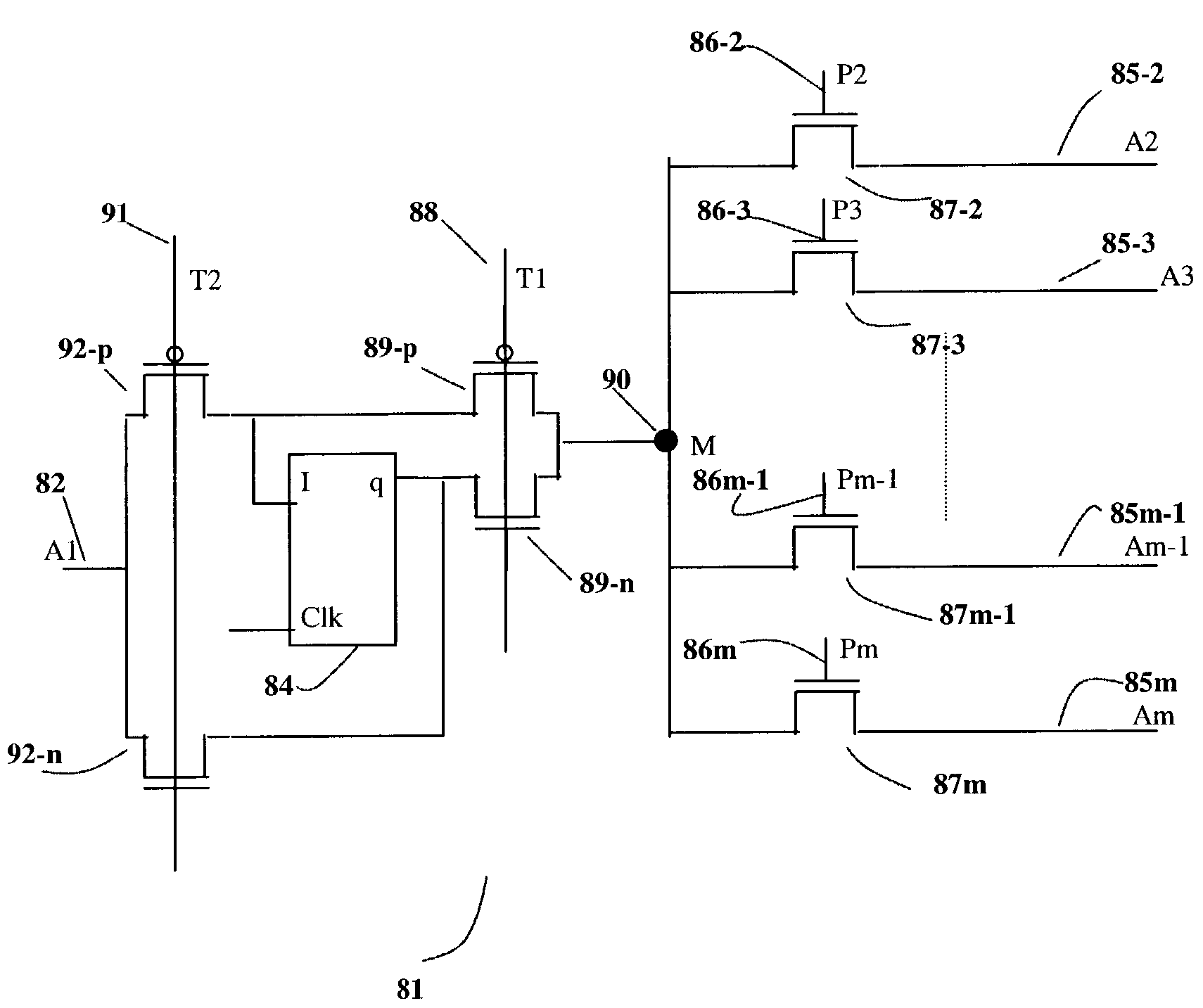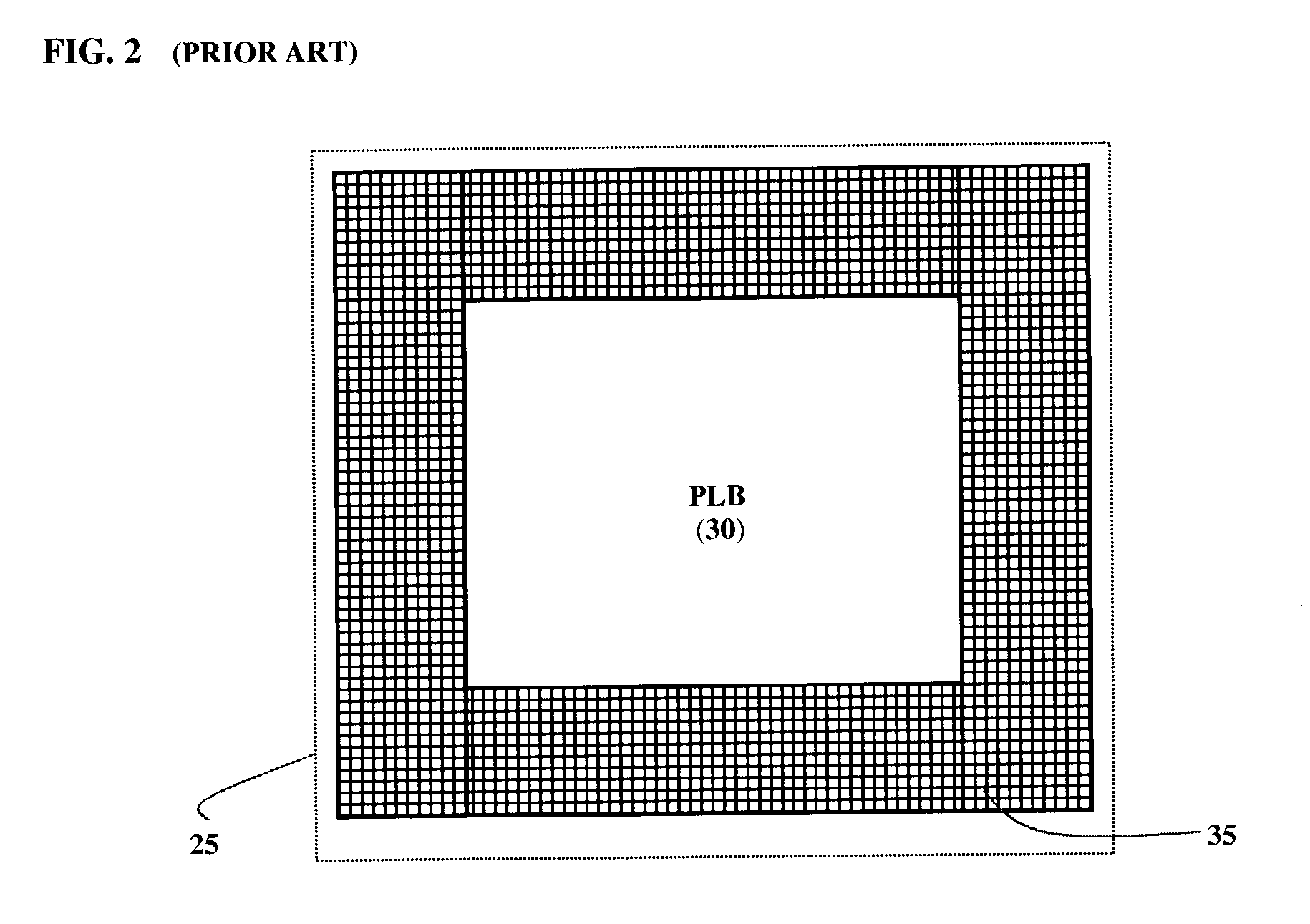Architecture for programmable logic device
a logic device and logic circuit technology, applied in the field of programmable logic device architecture, can solve the problems of inability to provide functionality that requires any additional logic circuit elements, inability to use logic circuit elements in some plbs, and limited use of logic circuit elements in other plbs, and achieve the effect of efficient utilization of logic circuit elements
- Summary
- Abstract
- Description
- Claims
- Application Information
AI Technical Summary
Benefits of technology
Problems solved by technology
Method used
Image
Examples
Embodiment Construction
[0023]As shown in FIG. 1, a conventional FPGA 20 generally consists of an array of tiles 25 that collectively provide configurable logic-circuit element resources. The tiles 25 are programmatically interconnected to provide the desired set of functions using the resources available in one or more tiles 25.
[0024]FIG. 2 shows the internal structure of a conventional tile 25. Each tile 25 is made up of a programmable logic block (PLB) 30 and routing resources 35 that connect its input and output signals with other PLBs (not shown). A PLB 30 is also termed a Configurable Logic Block (CLB), a Configurable Logic Element (CLE) or a Programmable Function Unit (PFU). A PLB 30 typically includes the circuitry in which logic can be implemented in programmable logic devices.
[0025]The interconnection between tiles 25 in existing FPGA architectures is shown in FIG. 3. A PLB 30 in one tile 25 is connected with PLBs in other tiles 25 using routing resources in the form of a Connection Bloc (CB) 40 ...
PUM
 Login to View More
Login to View More Abstract
Description
Claims
Application Information
 Login to View More
Login to View More - R&D
- Intellectual Property
- Life Sciences
- Materials
- Tech Scout
- Unparalleled Data Quality
- Higher Quality Content
- 60% Fewer Hallucinations
Browse by: Latest US Patents, China's latest patents, Technical Efficacy Thesaurus, Application Domain, Technology Topic, Popular Technical Reports.
© 2025 PatSnap. All rights reserved.Legal|Privacy policy|Modern Slavery Act Transparency Statement|Sitemap|About US| Contact US: help@patsnap.com



